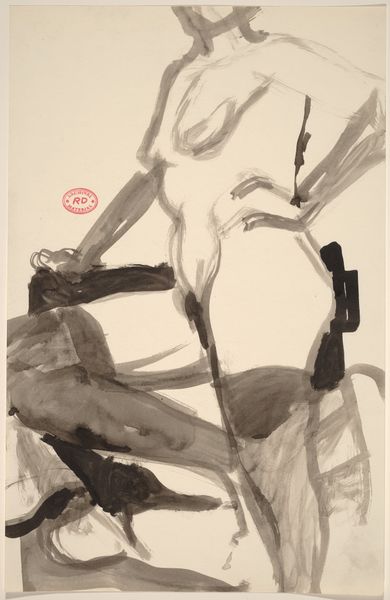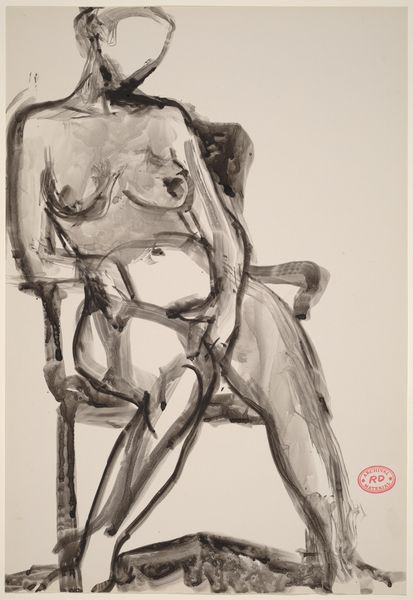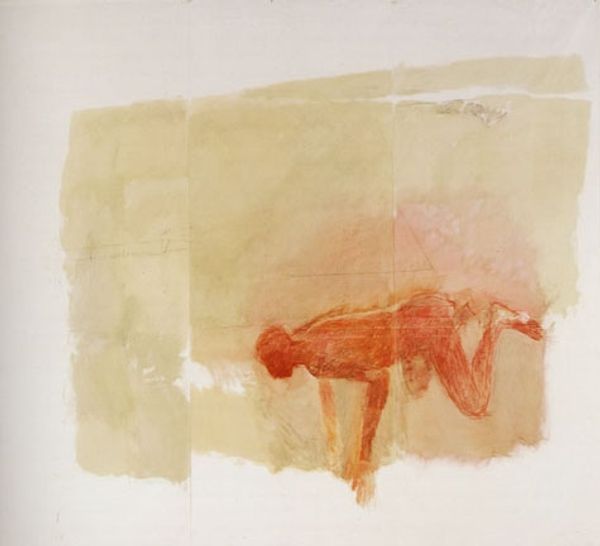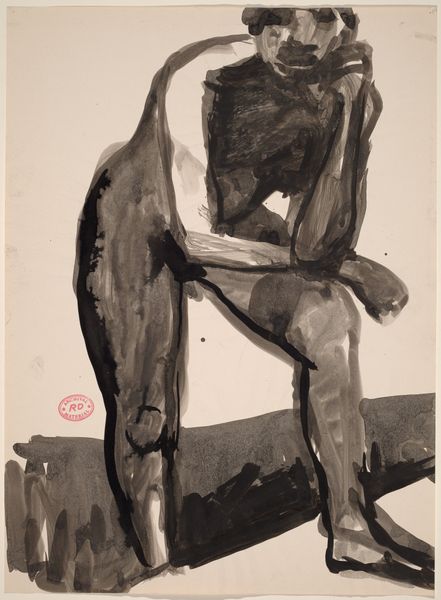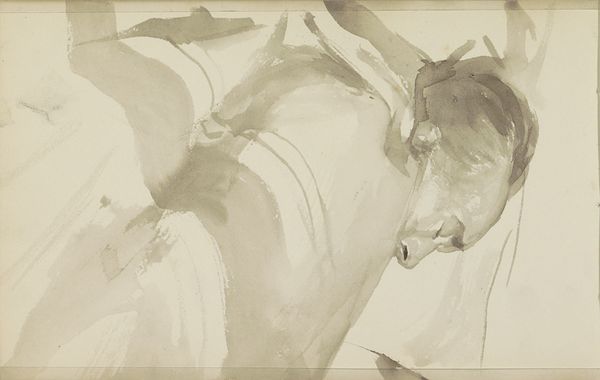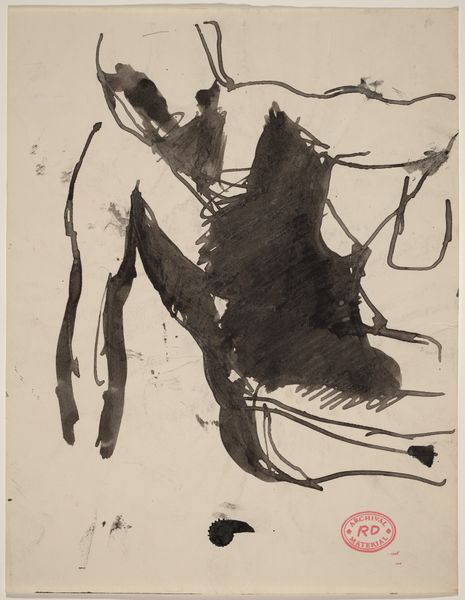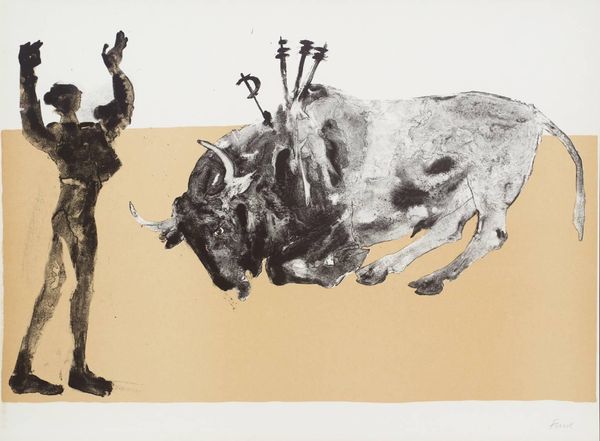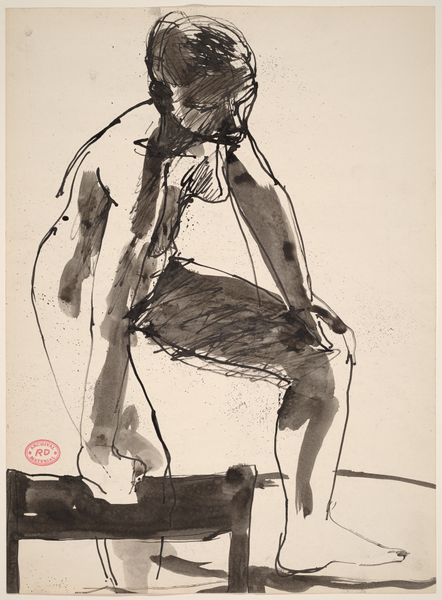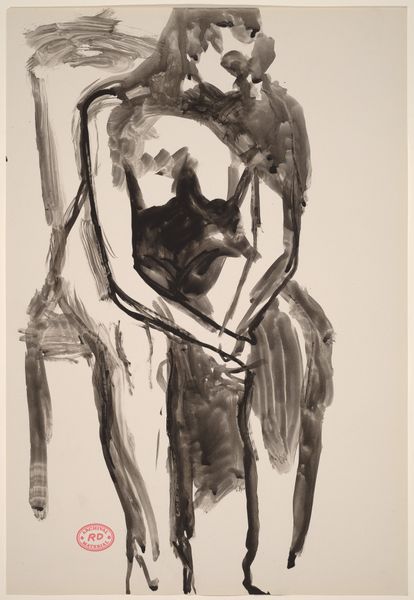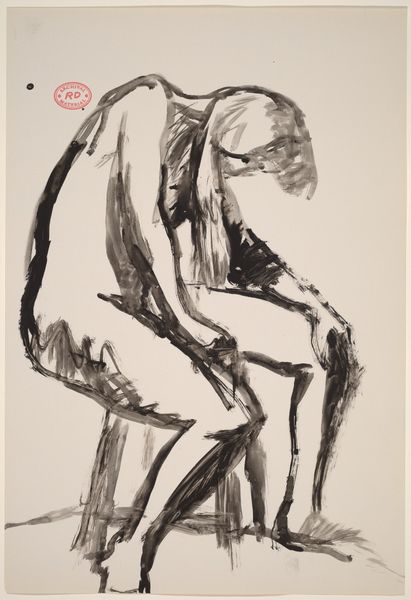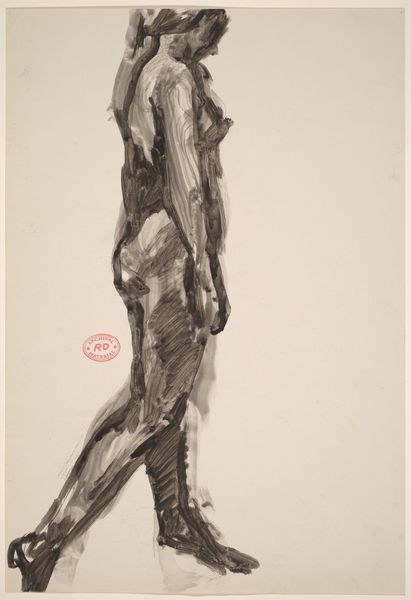![Untitled [nude lying on her side with left hand to cheek] by Richard Diebenkorn](/_next/image?url=https%3A%2F%2Fd2w8kbdekdi1gv.cloudfront.net%2FeyJidWNrZXQiOiAiYXJ0ZXJhLWltYWdlcy1idWNrZXQiLCAia2V5IjogImFydHdvcmtzLzJiNjZmNDQxLTNmYTEtNGM4Yy04ODcxLTY5ZTFmYTdhN2RjZS8yYjY2ZjQ0MS0zZmExLTRjOGMtODg3MS02OWUxZmE3YTdkY2VfZnVsbC5qcGciLCAiZWRpdHMiOiB7InJlc2l6ZSI6IHsid2lkdGgiOiAxOTIwLCAiaGVpZ2h0IjogMTkyMCwgImZpdCI6ICJpbnNpZGUifX19&w=3840&q=75)
Untitled [nude lying on her side with left hand to cheek] 1955 - 1967
0:00
0:00
drawing, ink
#
abstract-expressionism
#
drawing
#
ink drawing
#
self-portrait
#
figuration
#
bay-area-figurative-movement
#
ink
#
pencil drawing
#
nude
Dimensions: overall: 27.9 x 40.6 cm (11 x 16 in.)
Copyright: National Gallery of Art: CC0 1.0
Curator: Okay, so here we have a drawing by Richard Diebenkorn, most likely created between 1955 and 1967. The work, in ink, is called "Untitled [nude lying on her side with left hand to cheek]". What catches your eye first? Editor: The lines! So fluid, so...minimalist. It’s like a ghost of a body, barely there. Simultaneously powerful and vulnerable, like the afterimage of a thought. Curator: Precisely. Diebenkorn is stripping the figure back to its essence here. Note the use of negative space - how much the drawing *isn't* showing. See how he captures the curve of the spine and the bend of the arm with a couple of confident strokes. It’s quite astonishing. The sparseness is its strength. The eye fills in so much. Editor: It’s like he's capturing a fleeting moment, not trying to freeze it forever. You get the impression he really knew this form intimately. Also, the overall composition, while seeming spontaneous, it actually creates a really interesting play with the abstract vs the figure. I'd say the tension in the lines mirrors some tension of being human, of holding an impossible position between states... Curator: Absolutely, that interplay is essential. There’s this raw immediacy to it all, it completely epitomises the beauty found in imperfection, capturing the essence of form without rigidly defining it, right? You get a sense of weight and form using what essentially look like doodles. You mention human tension; for me the line running along the upper curve of the body just perfectly exemplifies this! I agree that the implied sense of the nude subject, the very ephemeral sense of body, in some moment between being fully seen and disappearing is central here! Editor: And the choice of ink – lends it this translucent feel. Makes it so alive and present. There’s an honesty about the medium, I think. Can I also point out that the archival red stamp gives the impression of an alternative nude in some weird, art world twist. Curator: Diebenkorn often worked in series. It allows him to return again and again, playing with motifs, like musical scales that are being played in ever more divergent scales and riffs. I appreciate the fact it leaves space for the spectator! What final reflection will you take from the artwork as we walk away from it, though? Editor: I think it's made me want to take myself a bit less seriously. And, maybe, find the extraordinary in the everyday. A nude can be an abstract truth. Curator: Very much so. I find this shows us that even incomplete ideas can still communicate with a direct and profound effectiveness! Thanks for helping unlock it.
Comments
No comments
Be the first to comment and join the conversation on the ultimate creative platform.

